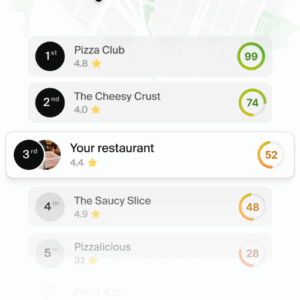Move over baby boomers. There’s a new sheriff in town that’s driving messaging and marketing strategies for a lot of businesses. In recent years, the number of millennials in the US surpassed the number of baby boomers – and the gap is only going to grow. That is why it is very important to understand how the interaction with Millennial customers should be.
Despite its relative size and market power, many businesses have struggled to find ways to connect and engage with millennials. That is because unlike gen-Xers that came before them, millennials’ communication and buying habits are significantly different than the generations that came before them.
These differences come as a result of the rapid technological advancements that have taken place during their lifetime. Many millennials grew up with the internet, messaging apps, and have had instantaneous access to information for much of their life. This access has informed the way they would prefer to interact with businesses. Communicating with millennials doesn’t have to be hard though, especially if you follow these 5 tips.
Say goodbye to the phone
Since 1876, when Alexander Graham Bell placed the first call to Mr. Watson, the telephone has played a pivotal role in communication. While there have been advancements over the years that have enhanced telephone interactions, the basic means for communicating via the phone hasn’t changed much over the years.
Phone communication requires two parties to make a connection. In this fast-paced world that we live in, that is becoming more and more difficult. And that’s not just because millennials aren’t near their phones, it’s because many of them only want to speak on the phone if it’s absolutely necessary.
Instead, millennials rely primarily on messaging – either via the native SMS texting app on their smartphone or other messaging apps like Facebook Messenger or WhatsApp. Unlike phone communication, messaging is asynchronous and doesn’t require both parties to be present to make a connection. Millennials believe that conversations through this medium are more thoughtful and personal than either face-to-face or phone-based conversations.
Despite the fact that most millennials (and even baby boomers and gen-Xers for that matter) would rather message with a business, only 48% of businesses currently have messaging capabilities. Businesses that make efforts to speak to millennial customers on their terms and through their preferred communication channels will go along way toward creating happy, loyal customers.
be more casual with millennial customers
It might seem counterintuitive that messaging customers is more personal than a phone call, but it’s true. Millennials use messaging to communicate with family and friends all the time, and because of this, they view it as a more intimate form of communication.
This is because when communicating via text message, you have the time to REALLY think about what you’re going to say and the message you want to convey. Whereas it can be easier to let emotions get in the way and say something that you don’t really mean face-to-face or on the phone, which can lead to hard feelings.
When texting with millennial customers, you need to forget a lot of what you learned in business school. Your interactions can’t come across as marketing messages. They need to come across as conversations. Businesses need to think about communicating with customers the same way they would communicate with friends or family. Don’t throw away all formalities, but definitely be more informal than you normally would.
AJ Agrawal put it best in a post on Forbes.com, “One of the best pieces of advice I could give in this realm is to throw out all your terms and instead think of them as interactions. Instead of ‘engagement,’ you’re having a conversation. Instead of ‘retention,’ you’re catching someone’s attention by reminding them you care. And instead of ‘networking’ or ‘connections,’ you have conversations with friends.”
Keep it casual
A lot of nuance in conversation is lost when you can’t see the facial expressions and body language. This can often cause confusion or frustration by your customers millenials. The same can be true at times with text conversation at least until emojis and GIFs became commonplace.
GIFs and emojis allow you to better convey the tone of your conversation, while also coming off as more informal and casual. When incorporating emojis and GIFs into your customer conversations, make sure you are using discretion. It can be very easy to go overboard, especially when you start to feel more comfortable with your customers.
Be flexible
Make sure you’re flexible and keep an open mind. One of the defining traits about millennials is how willing they are to try new technologies. What works today with this generation, won’t necessarily work tomorrow. Make sure you have your pulse on the communication landscape and always be on the lookout for newer, better way to engage your millennial customers.
Don’t forget your other customers
I know we spent this entire post talking about how to interact with millennials. However, I wanted to close by stressing they are only one segment of your customer base. Right now, they are the shiny new toy, but baby boomers and gen-Xers still have a lot of spending power. Don’t forget about them. A lot of the tactics we’ve discussed above will work across many of your demographics, but you should still take the time to create targeted messaging for each of your market segments.
Improve the online reputation of your business with RAY
Do you want people to speak well of your brand online? With an adequate strategy you can improve the user experience and with it, the online presence of your business.
The best: you don’t have to spend all your time on homework. You only need the right tool.



